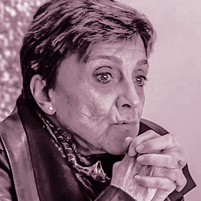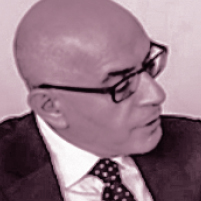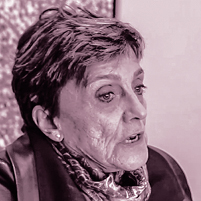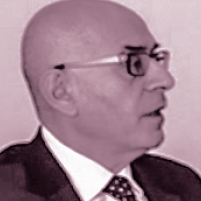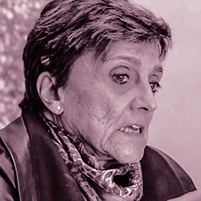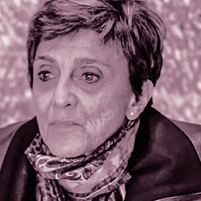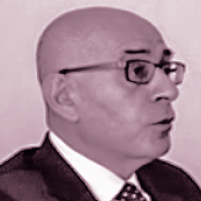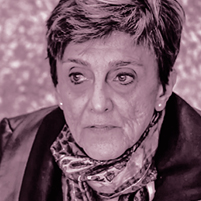Here is a possible starting point: The more art institutions a city has and the greater the number of social areas they create, as Professor Kahraman said, the more open a city becomes. Because art is something that is shared. Cinemas, theaters, language schools, venues where literary discussions are held, and museums are all open areas you enter and leave at will; as soon as you enter them, you are with people in a social space. Libraries, archives and museums are crucial and have a role as places of memory preservation and production. Add to this art, painting, music, sculpture, literature, and architecture, and you have the instruments of urban life and for sharing this life. The institutions they create truly transform cities into open cities and culture into open culture. At the same time, the accumulation of knowledge and artifacts must be shared and safeguarded in archives and libraries.
I’d like to add something on libraries and archives: Memory is the soil of the past. There can be no memory of the future. The future only has the memory of the past to go on. That’s why radical modernist movements place so much attention on obliterating memory. This happened in Turkey, especially in the 1930s after the alphabet reform, and it’s quite understandable. But the memory issue continues today. Established memory is now in the crosshairs. Memory naturally selects and discards, and this is true of modernity. But the deliberate erasure of memory, the removal of benchmarks or reference points we could call “memory spaces,” is a reality in its own right. That’s why museums and cultural institutions such as archives have a distinct and very special role to play. Turkey’s memory will increasingly survive only in archives and museums, and this is much more serious than it appears.
I see. May I ask what the artist’s role in culture is? Is it to espouse the cultural values of the land where he or she lives and transform them into art? Do artists have a responsibility to incorporate new international trends in their art? We live in the age of communication and technology. We can watch and experience the culture of the entire world. Would it be fair to ask artists to focus only on the values of the land of their birth?
Absolutely not, certainly not today, because there’s no longer any culture that’s focused in that way. At any rate, when you say Turkish culture, you’re referring to a hybrid thing like American or French culture or identity. All social identities are now highly hybrid. It’s not up to us to impose a responsibility on artists, but the following situation might. Throughout various periods, art has developed its own set of values and ethics. Some artists embrace them as they develop; others choose to remain outside. But no artist becomes a better artist because they conformed to those ethics. And that’s because art is an area of freedom, at least in its ideal sense. As far as I can see, it has provided the most extraordinary and free environment since the Enlightenment. Since the 19th century, art has not only aided free thinking, it has also reached a level where it can critique society, authority, government and lifestyles.
I’d like to give an example of how art is formed of connections, not of ruptures. I curated an exhibition where I attempted to demonstrate the traces of our local and classical motifs in the works of artists ranging from Fahrelnissa Zeid to Selim Turan, Mübin Orhon and Hakkı Anlı (the last three went to France in 1946), and, more recently, Burhan Doğançay and Seçkin Pirim. There were traces that even the artists might not have noticed. The presence of calligraphic composition in the works of Zeid, Orhon or Turan is instantly evident. These connections merit research in their own right and demonstrate that when you produce your heritage anew, your works don’t have to conform to previously defined norms. Does the artist have more responsibility towards history or society than other social groups? The romantic answer would be yes, but can you really differentiate this responsibility from that of a university lecturer or a judge? Actually, you can. The others act within strictly defined templates, regulations and conditions, whereas it is the freedom of expression – regardless of all influences – that sets the artist apart. Artistic identity has a responsibility that only emerges through a historical relationship and ethical stance. Assigning artists predetermined responsibilities suggests a failure to appreciate what they do, the existential dimension of their output.
And it wouldn’t work, anyway. The university lecturer is bound by a professional contract. The judge has a contract with the state and the public. Not so for the artist. In an earlier period dominated by religion, when religion defined culture, artists were beholden to religion or to their patrons. Not today. There are no enforceable contracts or records at any rate, so it simply couldn’t happen. But as I mentioned earlier, there may be an ethical stance, and that is something that can be quite subtle, only discernible in the fullness of time, something that only comes to light through artistic interpretation.
Something else I’d like to touch on here is the increasing importance of creative industries, their shared problems, and what can be done. Some thinkers today regard the “creative class” as the backbone not only of science and the arts but also of the new economy. “Creative class” refers to people working in the culture industries: artists; designers; professionals whose economic function is the development of new ideas, new products, new production processes, new technologies and new content; people working in the sciences, engineering, architecture, design, education, fashion, art, music and the entertainment industry; and people in jobs that require independent thinking, education, and problem-solving skills. In Turkey, too, we have to consider how we’re going to strengthen the creative class of our society. Today, large cities around the world are prioritizing creative industries in their development plans. They compete with one another, yet increasingly resemble each other in terms of both their physical attributes and the services they offer. That’s why they look for distinguishing characteristics in their own culture that give them a competitive edge. The Final Report of the YEKON Istanbul Creative Economy Workshop makes a striking point that is quite relevant to us:
The way out for countries caught in the middle-income trap, that is, for countries unable to move from a middle-income GDP per capita to a high-income GDP per capita, depends on moving their production and export structures towards creative sectors with high added value.[2]
Based on turnover, creative industries generate higher added value than other sectors; their production processes also have a positive effect on other sectors. Publishing, for example, increases paper production. The music industry stimulates the manufacturing of instruments and technical equipment. If you shoot a film in an Istanbul neighborhood, you help the shopkeepers there. Another distinguishing characteristic of creative industries is their untiring pursuit of the new and the original. Design is the leading creative activity in this regard.
According to a study carried out in 2013[3], the contribution of Turkey’s creative sectors to industrial and service sector turnover was only .26 percent, while their contribution to added value was almost double that amount at .49 percent.
Aesthetic appreciation and a sense of urban pride are fostered in Italy, where small creative industries flourish. You walk down the street and see someone sewing jackets in a classical style, another making handbags. Another shop is making shoes, another brushes, another tiles, and so on. All this contributes so much to what we call general culture as well as to the economy. This production environment used to prevail in Turkey, too. Kayseri, for example, had small industries and workshops where artisans worked.
You mean like the old arastas, the workshop-lined streets in Ottoman bazaars?
Arastas, precisely. All knocked down in the name of redevelopment; all destroyed, all those artisans evicted. The same thing happened in Istanbul, too. Not necessarily maliciously, but through good intentions to clean up and modernize those areas. But with no support or incentives afterwards, these workshops weren’t able to survive in the big cities. The import–export policies of successive governments also had an enormous impact. You can bring anything you want into Turkey. Despite the presence of a fantastic leather industry here, you can import as much as leather you like. But if you’re an American returning home, you open your suitcase and pay tax on the value of half of whatever you purchased abroad. It’s important to protect, encourage, offer financial assistance, and make space for small industry and handicrafts in Turkey. Making space for them in cities also diversifies and enriches urban areas. You enter a street and see a variety of people, because it’s what people do that defines their identity. Small artisanal workshops are important economically and also help raise the level of general culture, because art doesn’t happen spontaneously and artistic skills don’t appear out of nowhere. An artisan’s father may have been a carpenter or his mother may have created things with her hands; he’d have seen all this at home. The level of general culture increases with the development of small industries and industry in general. Contemporary art no longer recognizes the scholastic distinction between art and crafts. Artists can create artwork with a needle and thread if they want.
That’s why handicrafts are so important worldwide today. We also need to remember that countless technologies and advanced manufacturing methods arise from applying technical or marketing expertise to small manufacturing operations to transform products into international merchandise. A country develops when each segment of manufacture, arts and crafts is aware of what all the others are doing. Divisions between them didn’t exist before the modern era, especially in places like India, China and Japan, where the arts had an influence on daily life. These countries were able to adapt swiftly and become quite creative in technology, and that’s why the IT sector is so advanced there.
